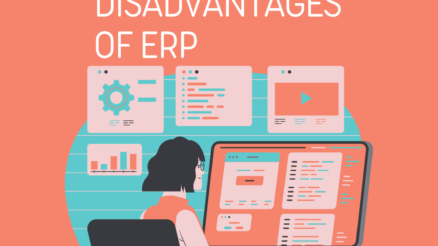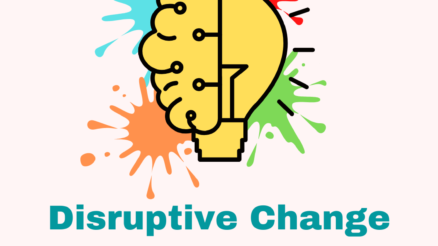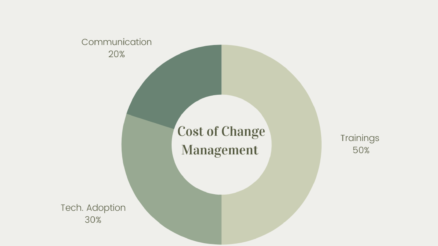Why are some organizations seamlessly adapt to change, while others struggle?
One of the reasons is that such organizations follow the rigid approach of change management.
The secret of success might lies in the Lean Change Management model which is a revolutionary approach to navigating organizational transformations.
This blog post explains the intricacies of the Lean Change Management model and explores its core principles, benefits, practical applications and limitations.
Whether you’re a business leader, change manager, or just someone keen on understanding modern management strategies, this post will equip you with insights into making change management more effective and responsive in your organization.
Let’s check this out and learn more about this model.
What is lean change management?
Lean Change Management is a contemporary approach to managing organizational change, blending principles from Lean Start-up and Agile methodologies.
This approach was developed by Jason Little to address the complexities and dynamic nature of modern organizational change.
The core philosophy of Lean Change Management lies in its iterative, adaptive, and feedback-driven process, distinguishing it from traditional, more rigid change management models.
This model places a strong emphasis on understanding and addressing the needs and feedback of the ‘customers’ of the change, whether they are internal stakeholders, employees, or external clients.
Rather than implementing large-scale changes in one go, Lean Change Management advocates for small, iterative modifications. This allows organizations to test changes, learn from them, and make necessary adjustments more efficiently.
Read more about: Lean Change Management Cycle
Historical context of Lean Change Management Model
The historical context of how Lean principles influenced change management is a fascinating journey that traces back to the manufacturing innovations of the mid-20th century and evolves into the comprehensive business strategies of today.
Understanding this evolution provides insight into how Lean principles have reshaped change management.
1. Origins in Manufacturing (Post-World War II):
The roots of Lean principles can be traced back to the Toyota Production System, developed in Japan after World War II. Spearheaded by engineers Taiichi Ohno and Eiji Toyoda, TPS focused on eliminating waste (muda), improving productivity, and maximizing value.
TPS introduced concepts like Just-In-Time production (reducing inventory waste), Kaizen (continuous improvement), and Jidoka (automation with a human touch).
Read more about: Change Management Case Study – Toyota
2. Emergence of Lean Manufacturing (1980s):
Lean principles gained global recognition after researchers at MIT studied Toyota’s approach in the 1980s, coining the term ‘Lean Manufacturing’. This methodology emphasized efficiency, waste reduction, and responsive production techniques.
Beyond manufacturing, Lean started influencing other business sectors, advocating for principles like customer value, process simplification, and employee involvement.
3. Integration with Agile and Software Development (1990s-2000s):
In the late 1990s and early 2000s, the Agile movement in software development started. Agile methodologies, with their emphasis on flexibility, iterative development, and customer collaboration, shared common ground with Lean thinking.
The convergence of Lean and Agile led to ‘Lean Software Development’, adapting Lean principles to the realm of software, further emphasizing efficiency, adaptability, and customer-centric design.
4. Lean Thinking in Change Management (2000s-Present):
Organizations began applying Lean thinking to broader operational and strategic areas, including change management.
Jason Little’s introduction of Lean Change Management marks a significant milestone. This model combines Lean thinking with Agile’s adaptability, emphasizing iterative change, feedback loops, and stakeholder involvement.
5. Current Trends and Future Outlook:
The core of Lean, continuous improvement (Kaizen), is now integral to change management, focusing on gradual, incremental change rather than large-scale transformations.
Modern Lean Change Management puts a stronger emphasis on organizational culture and employee engagement, recognizing that people are central to successful change.
Core Principles of Lean Change Management Model
The core principles of the Lean Change Management model reflect a modern approach to managing change in organizations.
These principles are designed to be flexible, iterative, and responsive, aligning with the dynamic nature of today’s business environment.
Let’s explore each principle in detail, along with examples for a better understanding.
1. Adaptability:
Adaptability refers to the ability of an organization to quickly respond to changes in its internal or external environment. This principle emphasizes the importance of being flexible and open to change, rather than sticking rigidly to pre-defined plans.
Consider a technology company that’s developing a new software product. Midway through the development process, they receive feedback that a major competitor has released a product with similar features. Instead of continuing with the original plan, the company adapts its strategy, focusing on differentiating features and leveraging its unique strengths.
2. Iterative Development:
This principle advocates for implementing change in small, manageable increments rather than large, sweeping transformations. It allows organizations to test changes, learn from them, and make necessary adjustments in a controlled manner.
For instance, a retail chain planning to revamp its customer service process might start by implementing changes in a single store. Based on the results and customer feedback from this pilot, they can refine their approach before rolling it out to other locations, ensuring a more effective and tailored implementation.
3. Feedback-Driven:
Feedback-driven change means continuously gathering and incorporating feedback from all stakeholders throughout the change process. This principle ensures that changes are aligned with the needs and expectations of those affected by them.
For example, a university planning to update its curriculum could set up regular feedback sessions with students, faculty, and industry advisors. This feedback is then used to make ongoing adjustments to the curriculum, ensuring it remains relevant and valuable to students’ future careers.
4. Collaborative:
Collaboration is key in Lean Change Management. This principle involves engaging people at all levels of the organization in the change process. It promotes transparency, increases buy-in, and leverages diverse perspectives.
Imagine when a healthcare provider decides to implement a new electronic health record system, it forms a cross-functional team including doctors, nurses, IT staff, and administrative personnel. This team works together to identify needs, design processes, and train staff, ensuring the new system meets the practical needs of all users.
5. Customer-Centric Approach:
This principle focuses on creating value for the customer or end-user. In Lean Change Management, decisions are made with the customer’s needs in mind, ensuring that the change delivers real value.
For instance, a software development company might use customer surveys, user testing sessions, and market analysis to understand the needs and preferences of its users. This information guides the development of new features and improvements, ensuring the final product closely aligns with what customers want.
6. Sustainable Change:
Sustainable change refers to implementing changes that are durable and maintainable over time. It’s about creating long-term value rather than seeking quick fixes.
For example, a manufacturing company looking to reduce waste might implement a recycling program and use more sustainable materials. Rather than a one-off initiative, the company integrates these practices into its everyday operations, creating a culture of sustainability.
7. Respect for People:
This principle emphasizes treating everyone involved in or affected by the change with respect.
It acknowledges the human aspect of change management, recognizing the importance of addressing concerns and valuing contributions.
For example, when a large corporation undergoes a restructuring process, management ensures open communication, provides support and training for employees transitioning to new roles, and values employee input throughout the process.
Benefits of Lean Change Management Model
The Lean Change Management Model, with its modern and agile approach, offers several benefits that make it particularly effective in today’s fast-paced and constantly evolving business environment.
Here are some of the key benefits:
1. Increased Flexibility and Responsiveness:
Lean Change Management allows organizations to be more adaptable and responsive to changes in the market or their internal environment. It facilitates quicker response times to emerging challenges and opportunities.
A company can rapidly adjust its strategies in response to new technological advancements or competitive pressures, ensuring it remains relevant and competitive.
2. Improved Stakeholder Engagement and Buy-in:
By involving stakeholders at all levels in the change process, this model fosters a sense of ownership and participation, leading to higher levels of engagement and buy-in.
When employees are involved in developing and testing new processes, they are more likely to support and adopt these changes, leading to smoother implementation.
3. Enhanced Ability to Manage Risk:
Implementing change in small, incremental steps allows for better risk management. It provides the opportunity to test changes on a smaller scale before full implementation, reducing the potential negative impact.
A business can trial a new customer service approach in a single department or location, assess its effectiveness, and make necessary adjustments before rolling it out company-wide.
4. Greater Focus on Customer Value:
The Lean Change Management Model emphasizes delivering value to the customer, ensuring that changes are aligned with customer needs and preferences.
A product development team can continuously integrate customer feedback into the development process, ensuring the final product meets or exceeds customer expectations.
5. Continuous Improvement Culture:
The model promotes a culture of continuous improvement (Kaizen), encouraging ongoing enhancements and innovations.
An organization regularly reviews its operational processes and seeks feedback from employees and customers to identify areas for improvement, leading to continuous enhancements in efficiency and service quality.
6. Reduced Resistance to Change:
Incremental changes and involving stakeholders in the change process can help in reducing resistance, as changes do not come as sudden disruptions.
Gradual implementation of a new IT system with thorough training and support helps employees adapt more easily, reducing pushback and increasing user adoption rates.
7. Efficient Resource Utilization:
Lean Change Management promotes the efficient use of resources by focusing on eliminating waste and only implementing changes that add value.
Streamlining a manufacturing process to eliminate unnecessary steps can reduce costs and improve productivity without additional resource investment.
8. Data-Driven Decision Making:
Emphasizing feedback and learning, the model supports data-driven decision-making, ensuring that changes are based on real-world evidence and insights.
A marketing team uses data from customer surveys and market analysis to inform their campaign strategies, leading to more targeted and effective marketing efforts.
Limitations of Lean Change Management Model
While the Lean Change Management Model is highly effective in many scenarios, it’s important to recognize its limitations or challenges.
Understanding these can help organizations anticipate and address potential issues when applying the model. Here are some of the key limitations:
1. Requires a Cultural Shift:
Implementing Lean Change Management often requires a significant shift in organizational culture towards flexibility, adaptability, and continuous improvement. This can be challenging, especially in traditional organizations with rigid structures.
A company with a top-down management approach may struggle to adopt the collaborative and iterative nature of Lean Change Management, leading to resistance or ineffective implementation.
2. Complexity in Large Organizations:
Applying Lean principles in large, complex organizations can be challenging due to the scale and diversity of operations. Coordinating change across various departments and aligning everyone can be a daunting task.
In a multinational corporation, synchronizing Lean Change initiatives across different countries, cultures, and business units can create complexities and inconsistencies.
3. Over-Reliance on Incremental Change:
The model’s focus on incremental change can sometimes be a limitation, especially in situations where radical or transformational change is needed.
If a company faces a disruptive industry shift, small, iterative changes may not be sufficient to remain competitive, and a more comprehensive overhaul might be necessary.
4. Potential for Change Fatigue:
Continuous change and constant iterations can lead to change fatigue among employees, potentially reducing engagement and productivity.
A team subjected to frequent process adjustments may become tired and cynical about change, diminishing the effectiveness of new initiatives.
5. Risk of Losing Sight of the Big Picture:
Focusing on small-scale experiments and short-term adaptations can sometimes lead to losing sight of the overall strategic objectives.
A business might get caught up in optimizing minor processes while neglecting more critical strategic challenges or opportunities.
6. Challenge in Measuring Impact:
The incremental nature of change in this model can make it challenging to measure the impact of specific changes, especially in the short term.
It may be difficult to attribute improvements in customer satisfaction or operational efficiency to specific Lean Change interventions when changes are small and frequent.
7. Resource Intensive:
Lean Change Management requires ongoing effort, time, and resources, especially in terms of gathering continuous feedback and involving stakeholders in the process.
Consistently engaging employees in workshops, feedback sessions, and training can be resource-intensive, requiring significant time and manpower.
8. Dependency on Effective Leadership and Communication
The success of this model heavily relies on effective leadership and clear communication. Inadequate leadership or poor communication can hinder the change process.
If leaders fail to clearly communicate the purpose and benefits of changes, or if they do not lead by example, it can undermine the change efforts.
Final Words
Lean Change Management model represents a significant shift from traditional change management approaches, offering a more agile, responsive, and inclusive framework. Its principles of adaptability, iterative development, and stakeholder engagement align well with the dynamic nature of modern business environments. Understanding both the strengths and challenges of this model can help organizations implement change more effectively, ensuring that they remain competitive and responsive in an ever-evolving world.



